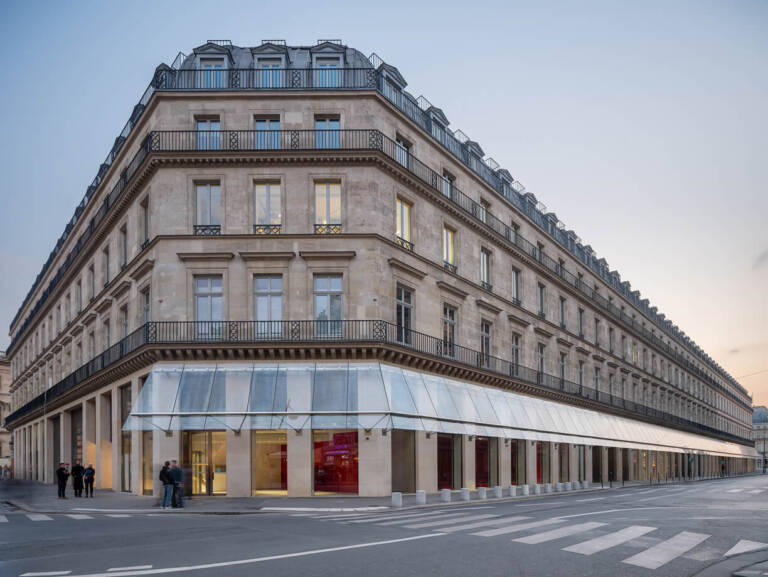At first glance, Exposition Générale at Fondation Cartier reads as a meditation on the past and future. The references to the Grands Magasins du Louvre expositions in the 19th century in the place du Palais-Royal building that the Fondation Cartier now occupies; the works that blend our living world and their preservation with the future forward corners of experimentation, science, technology, and fiction. But as we walked through the varying sections of the inaugural show, the word rootedness in us started taking shape. Not as a nostalgic return to home, but a recognition that our very seed is formed by ecologies, our inner landscapes emerging from the earth. Our homes, our roots, are not just our hometowns, but a grand, living force that continues to shape us. Exposition Générale reminds us of that.
Architect and artist Andrea Branzi’s Gazebo (2018), featured in the exhibition, presents a striking structure in white metal steel and stainless-steel grids housing a skeletal bed framework with a pillow and folded blanket on the top part of the grid, and notably without a ladder for access. Personal items such as drinking glasses, a television, and two gymnastic rings are seen around the 452 x 600 x 600 enveloping space. The setting evokes a coldness that reflects Branzi’s critique of the closed forms and rigid functions of modern architecture. Warmth is eventually introduced through the presence of a wool sweater designed by textile artist Nicoletta Morozzi, Branzi’s spouse, alongside natural shapes incorporated into the walls, which counterbalance the rigidness.
Positioned centrally, Branzi’s installation is flanked by two monumental oil-on-canvas works inspired by nature. Damien Hirst’s Wonderful World Blossom (2018), which the artist himself described as a piece on “desire and how we process the things around us and what we turn them into,” shares a wall with Joan Mitchell’s La Grande Vallée VI (1984), inspired by childhood memories of a secluded marshland in Nantes. Alltogether, these works integrate natural motifs of plants, flowers, skies, insects that almost create a grounding dialogue with Branzi’s installation. It whispers to us: our human-made homes, even our biological family units, are often confining, yet nature is always there as the grounding presence we need.
Aside from Richard Artschwager’s L’Arbre chez lui (1994) and Solange Pessoa’s imposing Miracéus (2014-18), trees and the forest serve as major components of the exhibition, weaving together human, non-human, and unseen spiritual elements into its narrative. Members of the Guarani and Nivacle Indigenous communities, artists from the Gran Chaco forest in northern Paraguay, contribute 14 works that raise awareness about the effects of deforestation on Indigenous peoples and the world. Self-taught artist Jivya Soma Mashe draws on his heritage as a member of the Indian Warli community in his work. His piece How People Got Their Name (1999) was created with acrylic and cow dung on canvas, reflecting a tradition in which women of the community paint their homes with rice paste and cow dung to commemorate significant moments in life. Mashe is notable for being the first man to use this technique. Claudia Andujar’s photography of the Yanomami in the Amazon represents a life-changing encounter. Her images are a peek into a rare kind of intimacy, capturing the colors of the forest, the lives of the community, and shamanic forces. Similarly, Raymond Depardon’s work interrogates “rootedness and the relationship a people maintains with its land, its language, and its history.” In his film Donner la parole (2008), he showcases the profound connection between people and place as he documents Amazonian communities speaking with dignity about their land and culture.
Nature is a point of reference, as seen in the exhibition, and our relationship with it is essential for our progress. Thus, the sections Un monde réel and Making Things constitute a reflection on the future, our knowledge, and our capacities through experimentation. After all, being grounded and rooted doesn’t mean remaining inactive, still. There is still a responsibility for us to create a world that is livable.
Sarah Sze’s Tracing Fallen Sky is an intricate installation that rests like an archaeological ruin embedded in the ground. Updated in 2025, it incorporates stainless steel, marble dust, archival pigment prints, a projector, and a pendulum—not only reflecting the artist’s fascination with Foucault’s pendulum but also exploring life’s meaning by understanding human behavior. Similarly, Jessica Wynne’s Do Not Erase (2019) inkjet print series engages with “knowledge and its erasure,” depicting scientists’ blackboards as evidence of thought in motion, works in progress, and precursors to discovery that are all important to our evolution.
A major work in the exhibition is Project pour le Kinshasa du troisième millénaire (1997) by Congolese sculptor and artist Bodys Isek Kingelez. A colorful model of an imagined futuristic city. In this work, the city is a utopian structure for expansion. It prominently includes a stadium, school, church, hospital, university, and train station, which the artist believes are the “building blocks for our collective well-being.” According to Fondation Cartier, the work “positions architecture as levers for postcolonial reconstruction,” emphasizing the importance of an intuitive urban plan for us as individuals and a collective. Structures are all rooted in the ground. Yet, like a tree that grows, architecture and the communities it houses need care, nourishment, and space to flourish.
The world breathes beauty through the ancestral, the Indigenous, and the alive—our diversities, even our dreams. Yet modern life and its structures often have us confined. Thankfully, nature is a centering force we can always return to.
Exposition Générale at Fondation Cartier is on view from October 25th, 2025 to August 23rd, 2026.
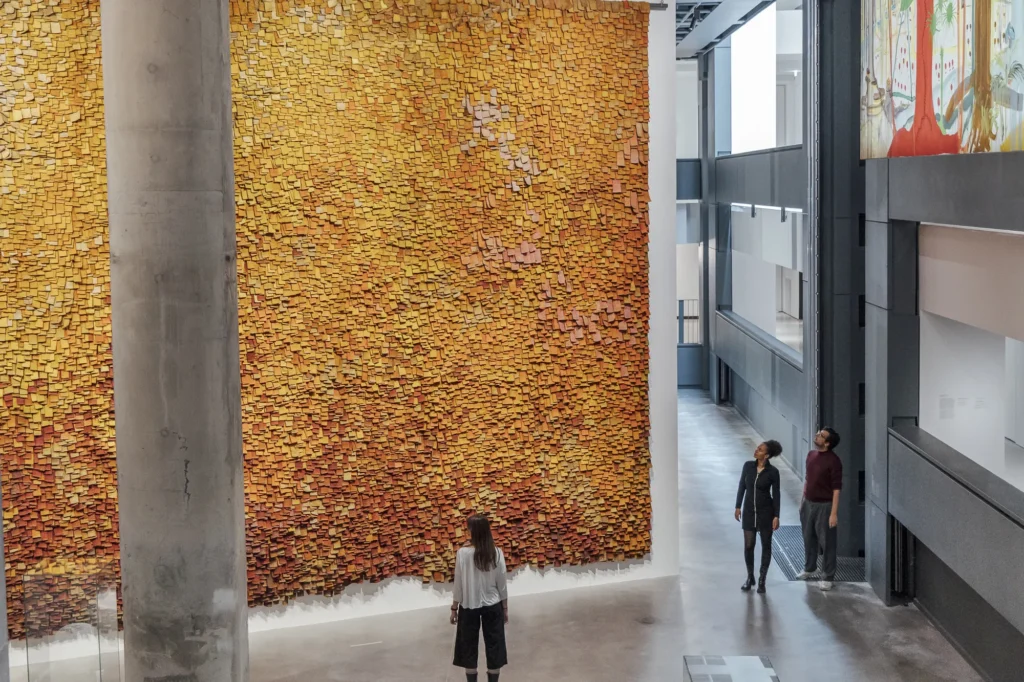
Muro en rojos, 1982
Photography by CYRIL MARCILHACY
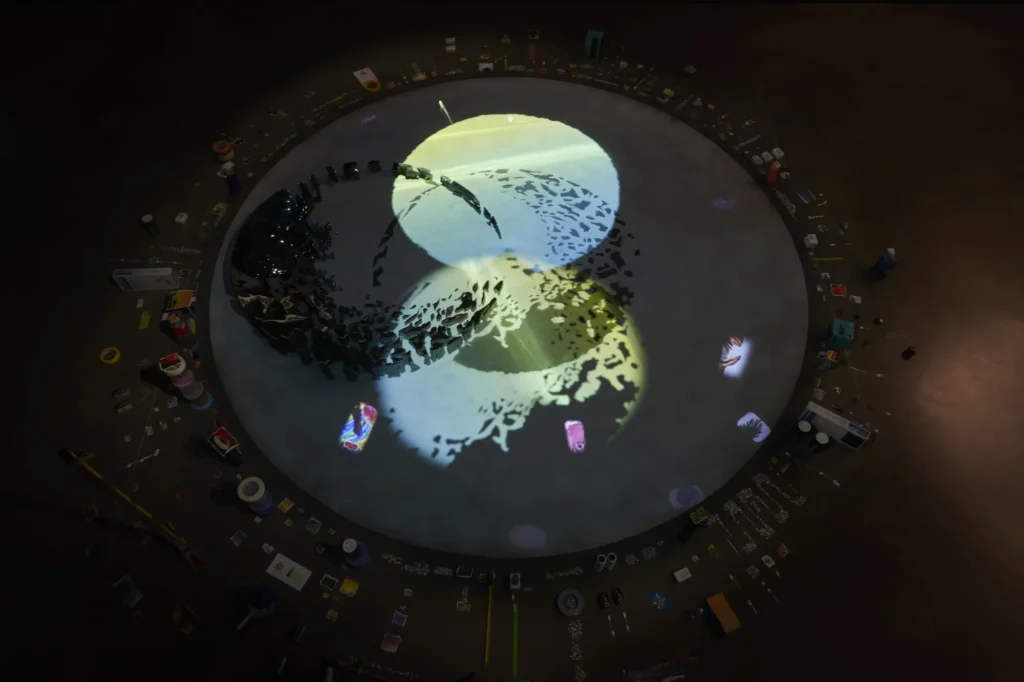
Tracing Fallen Sky, 2020
Courtesy of SARAH SZE. Photography courtesy of MARC DOMAGE
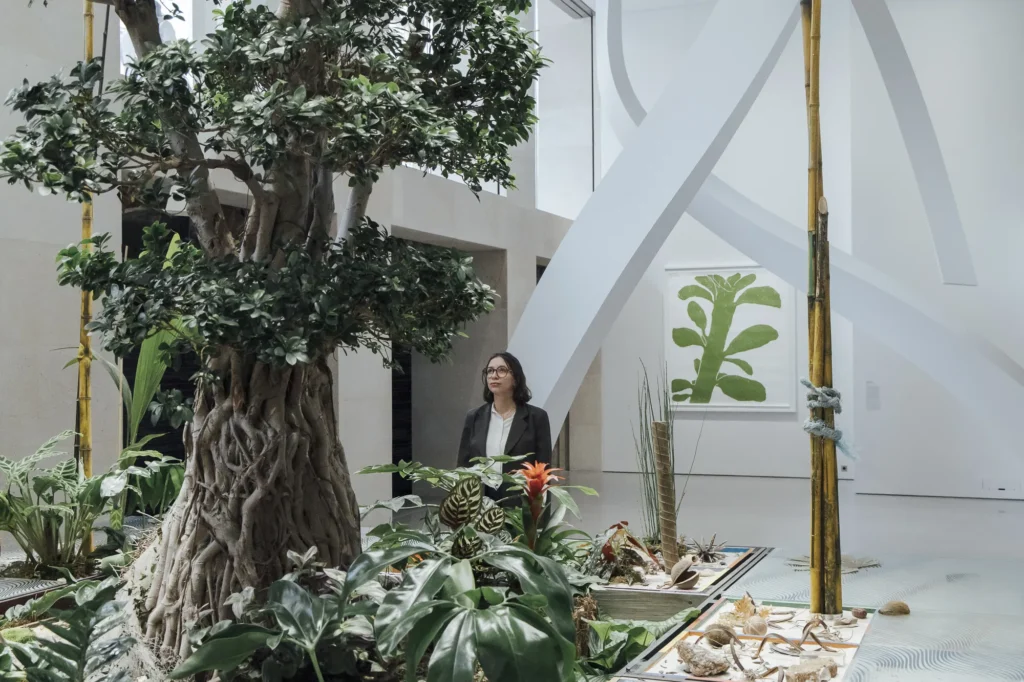
Photography by CYRIL MARCILHACY
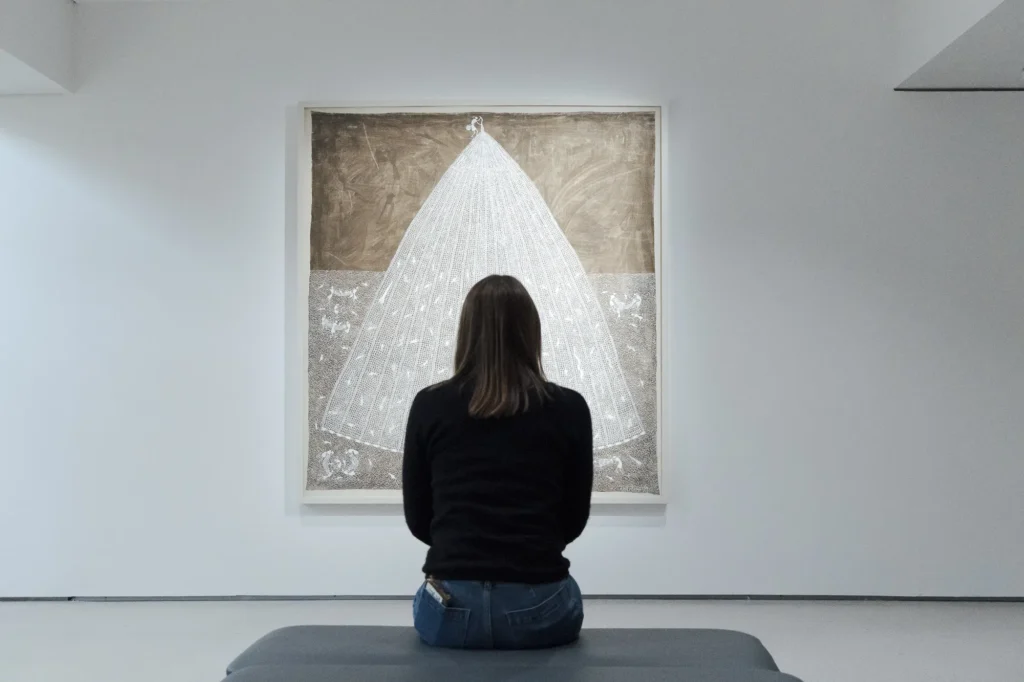
Fishnet, 2009
Photography by CYRIL MARCILHACY
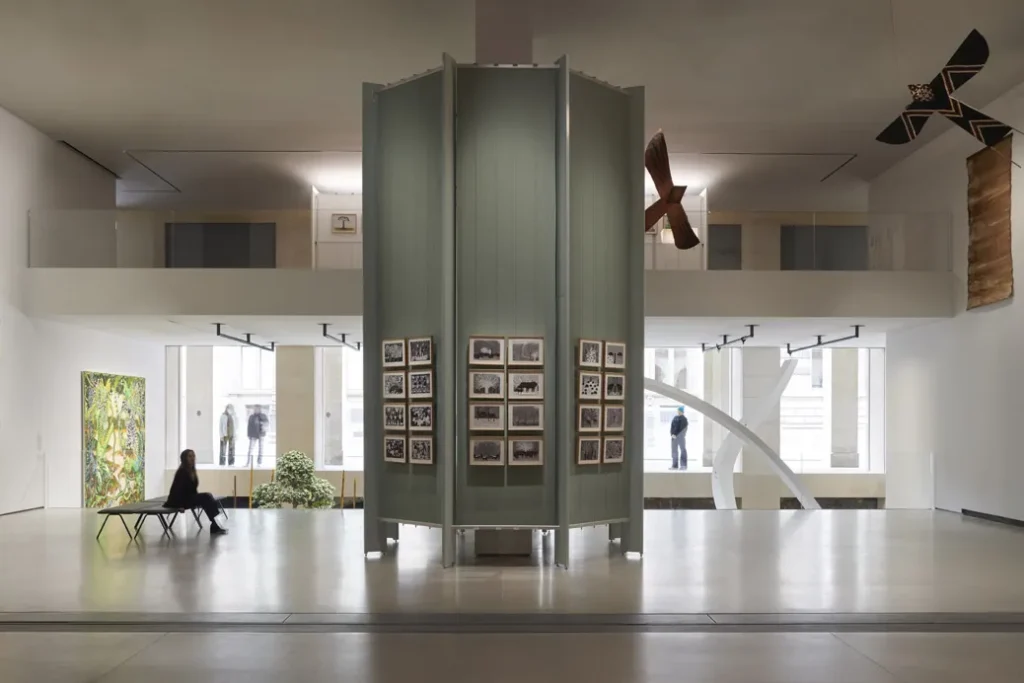
Photography courtesy of MARC DOMAGE
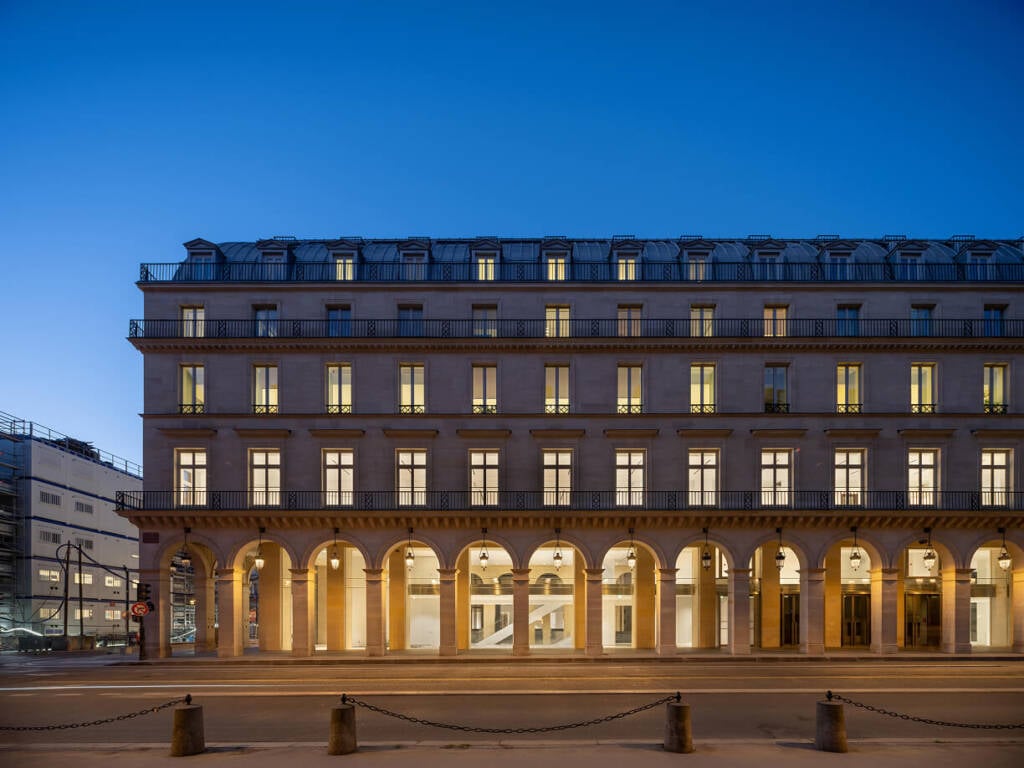
© JEAN NOUVEL / ADAGP, Paris, 2025
Photography by MARTIN ARGYROGLO
Words: LIZ BAUTISTA
Explore the vision of Béatrice Grenier, Director of Strategic Projects at the newly opened Fondation Cartier Palais-Royal, as she reflects on curatorial innovation, architectural storytelling, and the evolving role of museums in a digital age. Our conversation reveals how exhibitions and space shape cultural experience.
